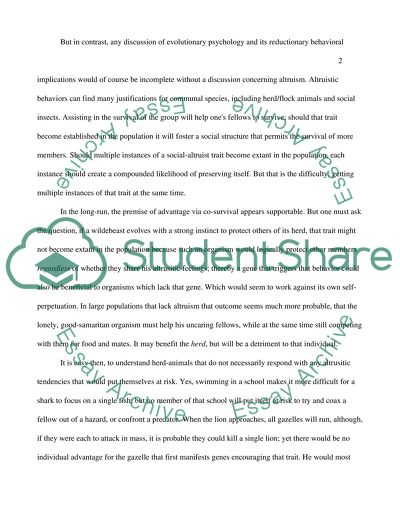Cite this document
(“To what degree is Evolutionary Psychology successful in providing Essay”, n.d.)
Retrieved from https://studentshare.org/environmental-studies/1420316-to-what-degree-is-evolutionary-psychology
Retrieved from https://studentshare.org/environmental-studies/1420316-to-what-degree-is-evolutionary-psychology
(To What Degree Is Evolutionary Psychology Successful in Providing Essay)
https://studentshare.org/environmental-studies/1420316-to-what-degree-is-evolutionary-psychology.
https://studentshare.org/environmental-studies/1420316-to-what-degree-is-evolutionary-psychology.
“To What Degree Is Evolutionary Psychology Successful in Providing Essay”, n.d. https://studentshare.org/environmental-studies/1420316-to-what-degree-is-evolutionary-psychology.


